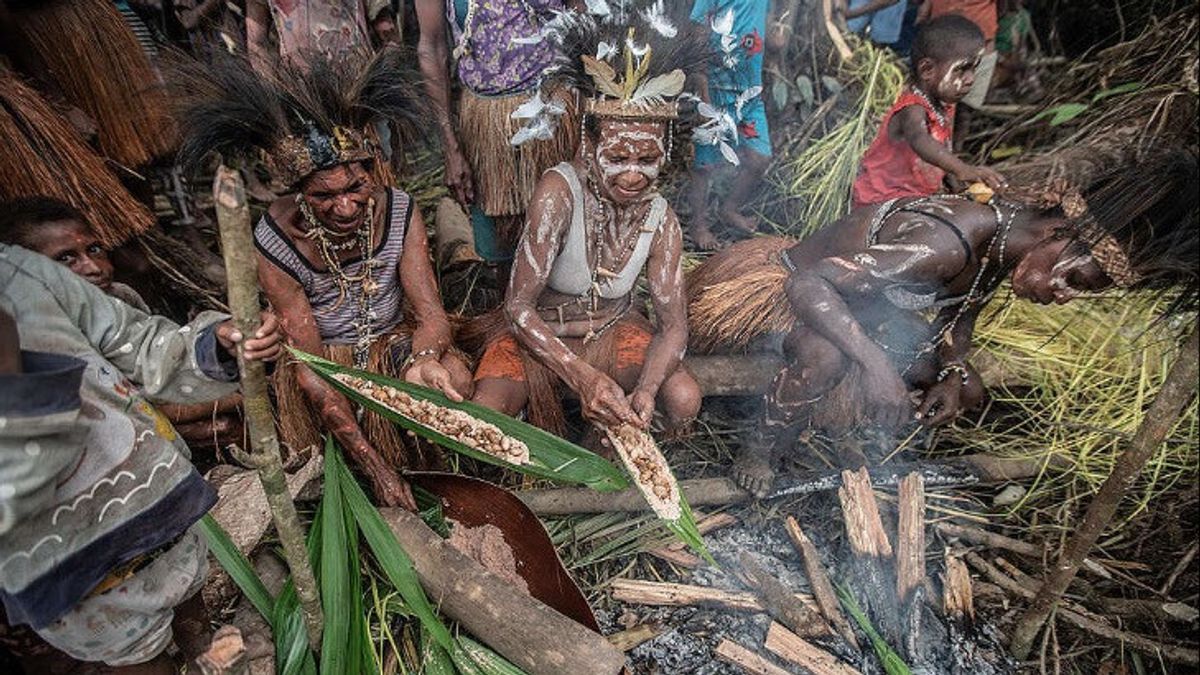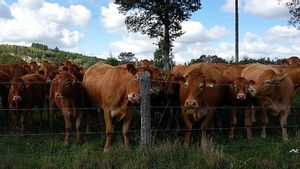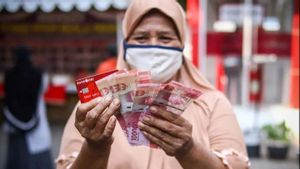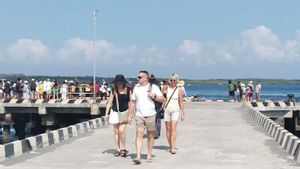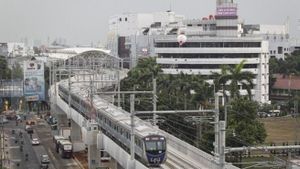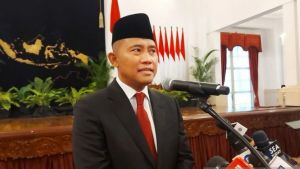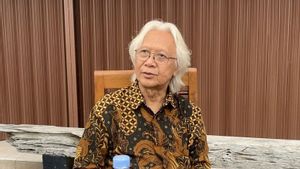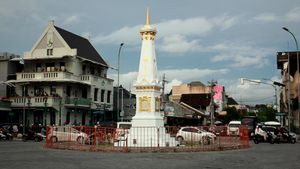JAKARTA The Awyu tribe became a conversation some time after environmental fighters from the Awyu Tribe held a peaceful demonstration in front of the Supreme Court (MA) building some time ago. Because of the action of the Awyu Tribe, the call for All Eyes in Papua echoed on social media.
Representatives of the Awyu Tribe from Papua to Jakarta to continue the struggle to defend customary land that is threatened with becoming oil palm plantations. The indigenous people sued the government for the permit of oil palm plantation companies to be revoked and the case was being appealed to in the Supreme Court.
In traditional clothes, environmental defenders from Awyu came to the Supreme Court. They held prayers and traditional rituals in front of the highest judicial institution, accompanied by the solidarity of Papuan students and the Coalition to Save Papuan Traditional Forests.
"We came a long distance, complicated, and expensive from the Land of Papua to Jakarta, to ask the Supreme Court to restore our seized rights by canceling the license of the palm oil company we are fighting," said Hendrikus Woro, an environmental defender from the Awyu Tribe.
Since then, images with the words All Eyes on Papua have spread on social media, as a form of support for netizens to the Awyu Tribe who are struggling to defend their customary land.
Who really is this Awyu Tribe?
According to the book Encyclopedia Suku Bangsa in Indonesia (1997) by Dr. Zulyani Hidayah, the Awyu Tribe is an ethnic group that lives in the Digul River basin on Pesisir Papua Selatan, Indonesia. The area is included in the Mappi Regency area which is also inhabited by the Yahraim people (Yaghai) and the Muyu people in the West. According to the population census in 2017, the population is around 27,300 people.
The livelihoods of the Awyu Tribe are mostly as a singer and hunter. Awyu's main food is sago, fish, and shrimp caught in rivers or swamps.
For this reason, when around 36,094 hectares or half of their Jakarta area is threatened with being used as a referee's land, the Awyu Tribe community protested. According to Hendrikus Woro, the life of the Awyu Tribe is very dependent on land, forests, rivers, swamps, and other natural resources.
SEE ALSO:
"It all becomes a source of livelihood, food, and medicine, as well as our socio-cultural identity. Forests are an eternal account for us indigenous peoples," said Hendrikus, quoting Greenpeace Indonesia.
The Awyu tribe uses Awyu which is included in the Papuan language clump which is divided into five to 11 dialects. Some of them are Asue, Pisa, Pasue, Aghu, Jair (Edera River, Kia Atas and Kia Bawah), Yenimu (Oser) and Siaxa (Siagha).
Language is one of the communication systems used by humans and has an important function in social life as a means of communicating, identity markers, and others.
Likewise with the people of Awyu, who use Awyu to communicate everyday. An example is Kiti or Aye for father's call, Uni for mother's call, and Tete for grandfather's call.
Unfortunately, the Awyu language culture is starting to fade due to the development of the times and technology. It is also influenced by internal and external factors that make the Awyu discussion fade.
One of the external factors is the intervening marriage between the Awyu tribe and other tribes. For example, the mixed marriage of the Awyu natives and the Javanese tribe, thus making the use of the Awyu language in everyday life fade little by little due to the language mixing between the two parents.
Meanwhile, the internal factor that causes Awyu's fading is because of the indifferent attitude of society itself.
Regarding food culture, sago is a symbol of life for the Papuan people, it is no exception for the Awyu people. Before sago is processed, there is a process that must be passed, namely the sago lapur process. At this stage, sago trees are beaten by wood so that they can be processed. The process of mixing sago is one of the unique things of the Papuan people.
To process sago, the Awyu people still use traditional tools such as axes, machetes, sago cultivators, sago pelepah, and coconut pelepah.
The activities of the Papuan people preparing to harvest sago farming products inspired the creation of the Sago Pangkur Dance. This dance symbolically describes the party rituals held by the Papuan people when making sago. Gotong royong, togetherness, and gratitude are the values that want to be displayed in this dance.
The English, Chinese, Japanese, Arabic, and French versions are automatically generated by the AI. So there may still be inaccuracies in translating, please always see Indonesian as our main language. (system supported by DigitalSiber.id)
